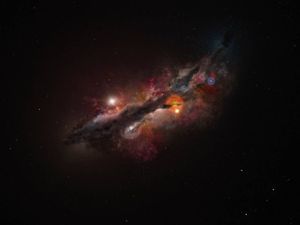Universe grew ‘much faster than expected’ after Big Bang, astronomers say
The recent detection of oxygen in the most distant known galaxy is making astronomers rethink how quickly galaxies formed after the Big Bang.

Astronomers have said the Universe may have developed “much faster than was expected” after oxygen was found in the most distant known galaxy.
Scientists working with the Alma telescope in Chile’s Atacama Desert said they were “astonished” by the detection of oxygen in Jades-GS-z14-0, the most distant confirmed galaxy ever found, as it suggests galaxies formed more rapidly after the Big Bang than previously thought.
The light from Jades-GS-z14-0, which was discovered last year by scientists using Nasa’s James Webb Space Telescope, took 13.4 billion years to reach Earth.
This means observers see it as it was when the Universe was less than 300 million years old, about 2% of its present age, the European Southern Observatory (ESO) said.
Researchers previously believed that a 300-million-year-old Universe was still too young to have galaxies full of heavy elements such as oxygen, as these only disperse through galaxies after the death of stars inside them.
“It is like finding an adolescent where you would only expect babies,” said Sander Schouws, a PhD candidate at Leiden Observatory in the Netherlands.





